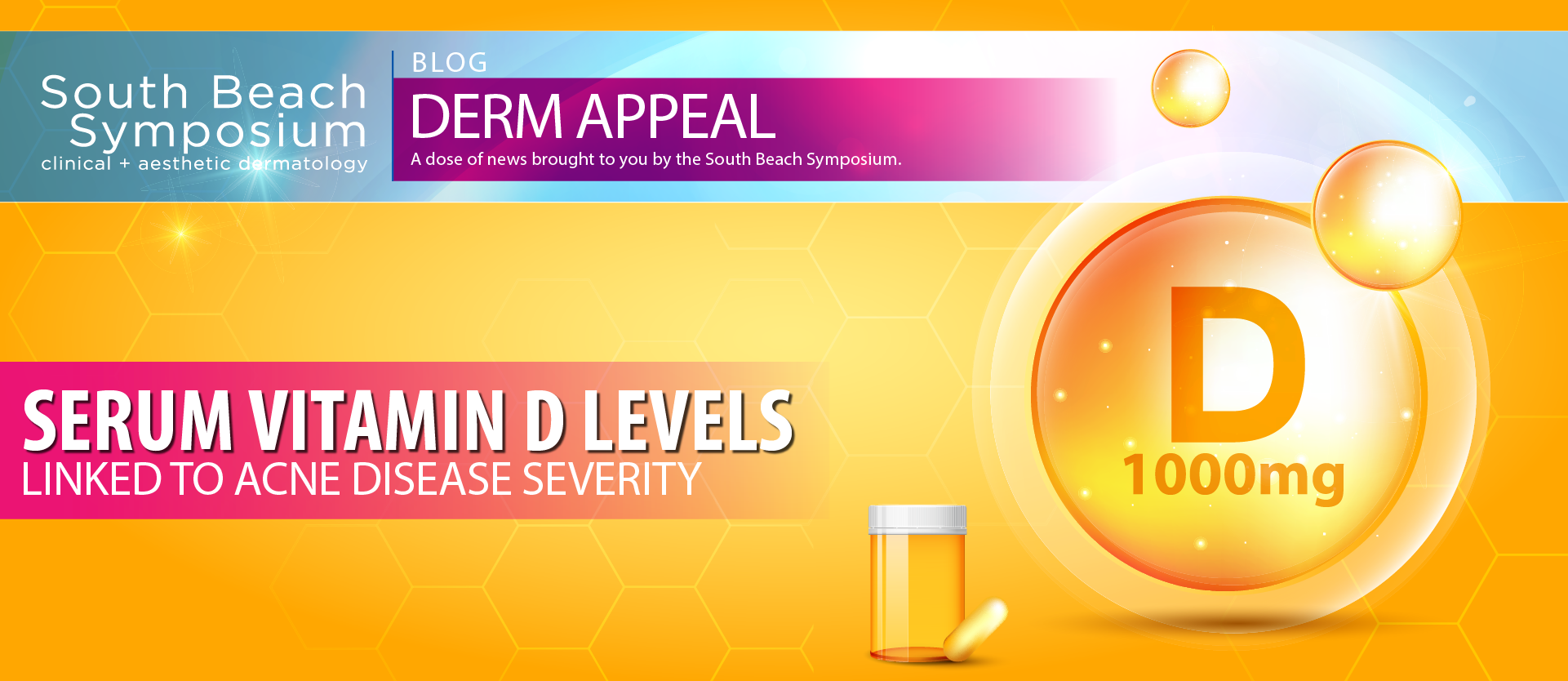The multifactorial skin disorder, acne vulgaris, is known to have many causes, including hormonal fluctuations, skin irritation, allergic reactions, and more. A factor currently under further investigation is vitamin D deficiency, which has been evaluated in previous studies yielding contradictory results. In some cases, serum 25 hydroxy vitamin D (25-OH vitamin D) levels were associated with acne pathogenesis, while other findings suggested acne lesions could be improved with vitamin D supplementation.
Assessing Vitamin D Levels in Acne Patients
In a recent study published in Dermatologic Therapy, researchers aimed to assess serum 25-OH vitamin D levels in acne patients to identify their association with disease severity in a large study group. Data from 134 acne patients and 129 sex- and age-matched healthy control participants were collected and evaluated. Disease severity was measured using Global Acne Grading Scale (GAGS) scores; serum 25-OH vitamin D levels were measured for all groups. Vitamin D status was based on the following serum cut-off values: vitamin D deficient, vitamin D insufficient, and vitamin D sufficient.
Lower Vitamin D Serum Levels and Severe Acne
The investigators found that patients with acne had significantly lower serum 25-OH vitamin D levels than their healthy counterparts – with a prevalence of 77.6% in the former and 63.9% in the control group. Furthermore, the study’s findings revealed a significantly higher prevalence of vitamin D deficiency, defined as ≤20 ng/mL, in acne patients compared with control subjects. Overall, deficiency was highest in patients with very severe acne (100%) and severe acne (93.8%) compared with moderate acne patients (6.7%) and those with mild disease (0%).
Researchers detected a negative-strong statistically significant correlation between serum 25-OH vitamin D levels and GAGS scores in patient groups, validating prior evidence of the role of vitamin D in acne vulgaris manifestation. As such, the authors concluded that “performing serum 25-OH vitamin D levels in especially severe acne patients may be considered as routine laboratory work.”
Prevalence of Vitamin D Deficiency
Vitamin D deficiency is a common phenomenon among the American population – affecting up to 42% of individuals. Research has shown that Black patients and those of Hispanic descent experience an elevated risk of vitamin D deficiency due to high levels of melanin, which reduce the body’s ability to produce vitamin D from sun exposure. Other vulnerable groups include premenopausal women, those with poor nutrition habits, individuals over the age of 65, as well as patients with certain chronic health conditions.
Currently, the amount of vitamin D recommended for adults aged between 19 and 70 is 600 IU per day or 25 micrograms. At this time, supplementation may not be necessary. Instead, to ensure patients consume adequate amounts of the compound, they should be encouraged to incorporate fatty fish, fortified milk, and other fortified food products.
A significant limitation of the study is its lack of vitamin D supplementation and assessment of the effects of such supplementation on acne lesions and acne disease severity. Although the latest findings suggest an important correlation between vitamin D and acne, whether vitamin D supplementation can provide a benefit to patients with acne remains unknown and requires further investigation.
















